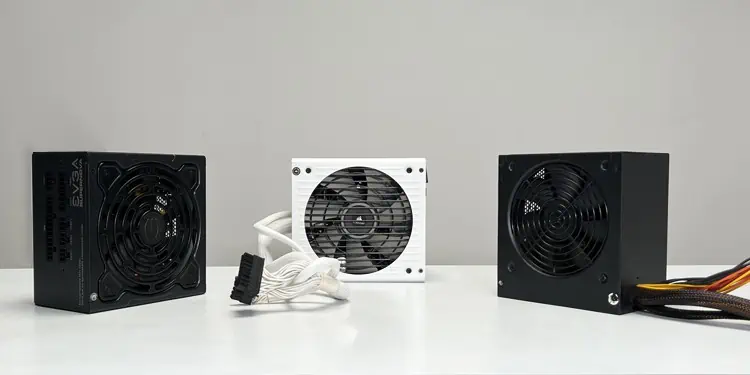Things can often get confusing when you are building a PC. For instance, choosing the right PSU modularity. The term ‘modularity’ here refers to the flexibility of attaching or detaching the cables based on the user’s requirements.
Although modularity has nothing to do with the working mechanism of a PSU, choosing the right one will always help improve the quality of the build.
There are three types of modularities a PSU offers—modular, semi-modular, and non-modular. While modular PSUs allow you to detach all the cables, this is not possible if you opt for a non-modular one.
But when we are referring to semi-modular PSUs, they do offer customization, but only up to some extent. To be more precise, you can not detach the motherboard and CPU power cable.
In this article, I’ll break down the differences between the three types of modularities along with their pros and cons. By the end, I’ll make sure you will have a detailed understanding of each of them. Without further delay, let’s jump right in.
What is a Modular PSU
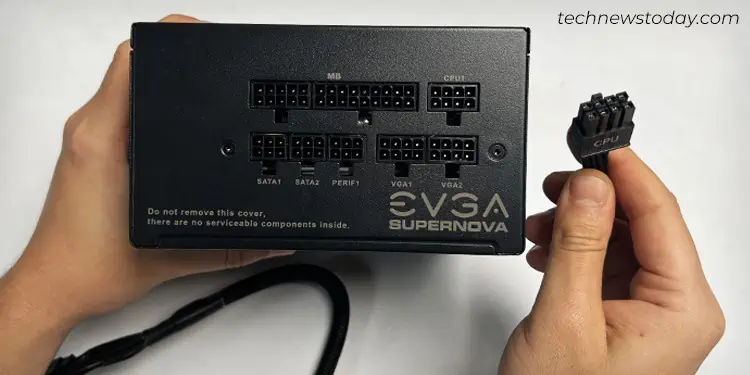
Modular PSUs are those PSUs that offer a detachable cable setup. Meaning, you can plug in only the most required (24-pin ATX motherboard power cable and 12V CPU power cable) needed to operate a PC and unplug the remaining ones.
Suppose you’re running a PC with no graphics card and an NVMe SSD. In such a case, you can let go of the PCIe and SATA power cables from your PSU. This way, you won’t have unnecessary cables messing around.
Below I have listed some pros and cons of a modular PSU for better analysis.
- Customizable – can detach unused cables
- High-quality components used
- Replacing or upgrading cables is easier
- Expensive than other modularities
- May limit the use of third-party cables
What is a Semi Modular PSU
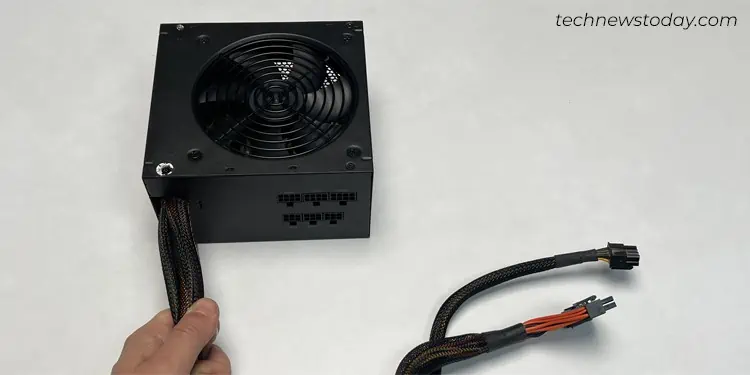
An interesting fact about semi-modular PSUs is that they already have a couple of cables attached to them. As you might have guessed, I’m particularly referring to 24-pin ATX and 12V CPU cables. Some of the semi-modular PSUs even have a pre-attached PCIe cable for connecting a graphics card.
Apart from them, you can add or remove other cables as you need. While these PSUs are not fully customizable like the modular ones, they do offer flexibility to some extent.
- Detachable cables except for 24-pin ATX and 12V CPU power cable
- Best choice for budget builds
- Expensive than non-modular PSUs
- Compatibility issues with third-party cables
What is a Non Modular PSU
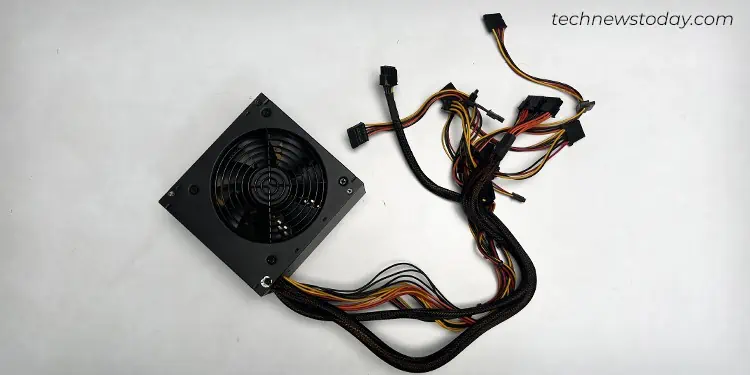
Unlike the former two, non-modular PSUs keep all the cables attached to them, whether or not they are being used. You cannot detach them as with modular or semi-modular ones. But yes, you can definitely unplug the AC cord though.
Jokes apart, now let’s see how the non-modular PSUs may ruin the aesthetics of your build. Assume that your PSU has three PCIe cables attached to them. However, if your PC utilizes a single GPU, as in most cases, you can’t detach the remaining two cables.
They will only occupy space inside your PC case and make it aesthetically unappealing. Further, the cable clutter could also restrict the airflow inside the case, leading to thermal throttling in the long run.
- Best for low-budget builds
- No issues of loose connections on the PSU side
- No compatibility issues with connectors and cables
- Difficult cable routing and management
- Impacts visual appearance
- Can reduce airflow
- Cable replacement is not available
- Low-quality components used – a risk to other PC components
Modular Vs Semi Modular Vs Non Modular PSU
No matter the modularity of a PSU, its sole purpose is to convert the AC power from the wall outlet to the DC power that your PC components can use.
However, there are a few differences between the three modularities. Here, I’ll cover the major ones that should help you decide the best PSU for your build.
Ease of Installation
Non-modular PSUs are much easier to install compared to the modular and semi-modular ones. Since they already have cables attached to them, you don’t require additional effort to connect them.
Having said that, it does not necessarily mean that modular and semi-modular PSUs are tedious to install. These PSUs have a clear tags to help you connect them effortlessly. For instance, you can see the labels in my fully modular EVGA Supernova 550 G3 PSU below.
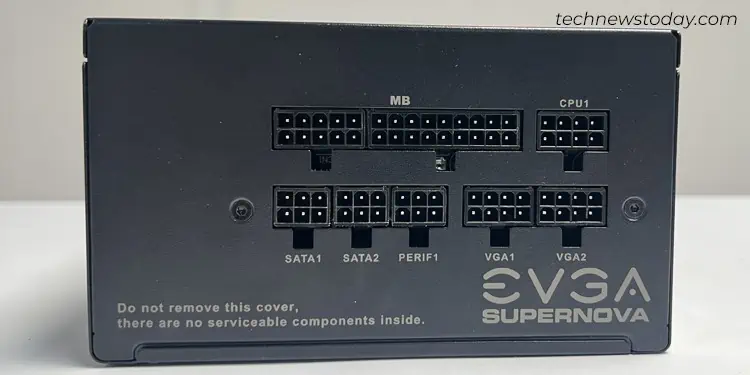
It embeds a clear MB label for connecting the 24-pin ATX cable that powers up the motherboard. Similarly, a CPU1 label to indicate the 12V CPU power cable socket, and a VGA label for connecting a GPU.
Not only do they have labels on the PSU, but on the connectors too. This makes it easier to distinguish the right cable for your component.
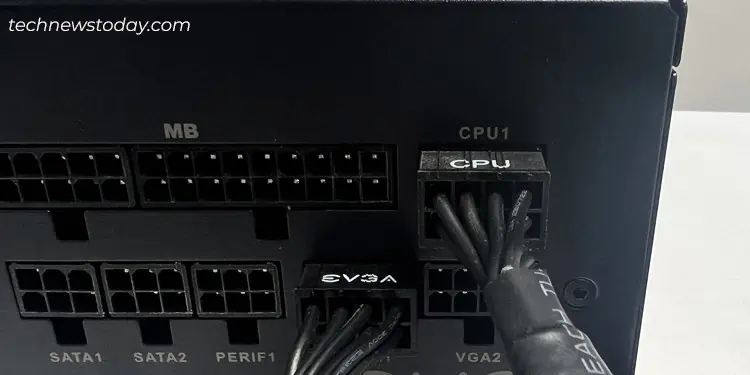
However, you might find it challenging and time-consuming to install a non-modular PSU. In fact, a bunch of unused tangling cables can even be annoying.
Cable Management and Aesthetics
As discussed earlier, non-modular PSUs have a bunch of cables soldered to them that might not be necessary for your system configuration.
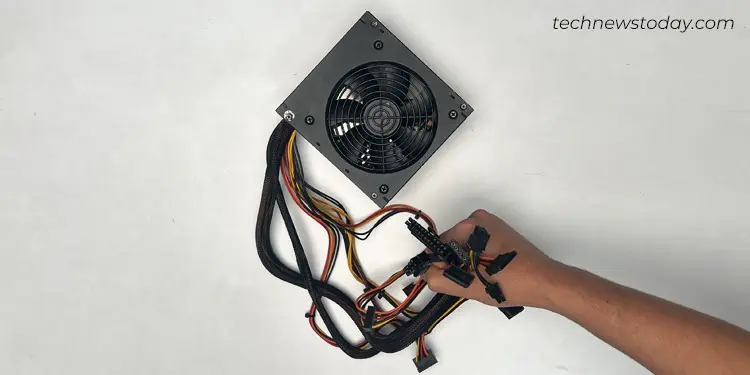
For instance, if you have not installed a dedicated GPU or the PC case doesn’t include a CD/DVD drive, you might want to detach all the PCIe and MOLEX cables. Unfortunately, you can’t do that!
Those unused cables will only make cable management a nightmare. While you have the option to tie them up using a zip tie or Velcro, it may still interrupt the airflow inside the PC housing.
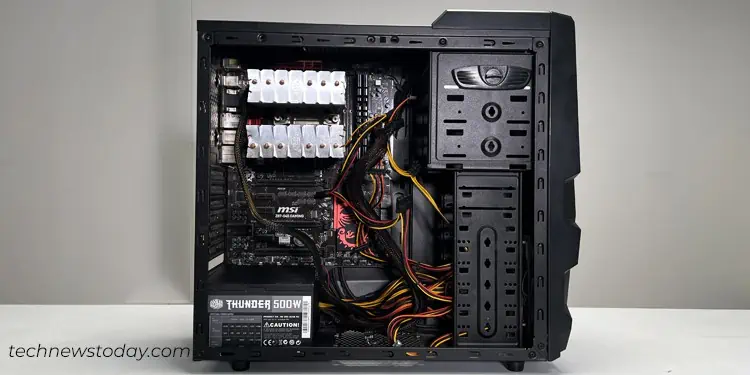
On the other hand, modular PSUs look better in the first place. It lets you detach every cable, even the crucial ones like a 24-pin ATX and 12V CPU cable which are significant for powering up the PC.
Similarly, airflow is always better when there are fewer cables inside the PC case. So, the system with modular or semi-modular PSUs has better cooling than one with non-modular ones.
When it comes to aesthetics, I don’t think I need to explain it further. The less the cable clutter, the more aesthetically pleasing your PC case will look.
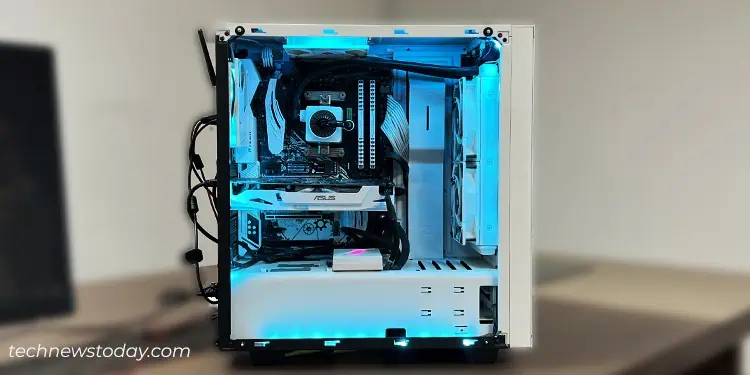
However, you should have a proper idea of routing the cables. Otherwise, the cable management will always look poor no matter whether you use a modular, semi-modular, or non-modular PSU.
Cable Replacement
If you have a non-modular PSU and encounter any faults in the cables, you’ll have to replace the entire PSU unit. However, this is not the case with modular or semi-modular ones. Simply replace the bad cables and you should be good to go.
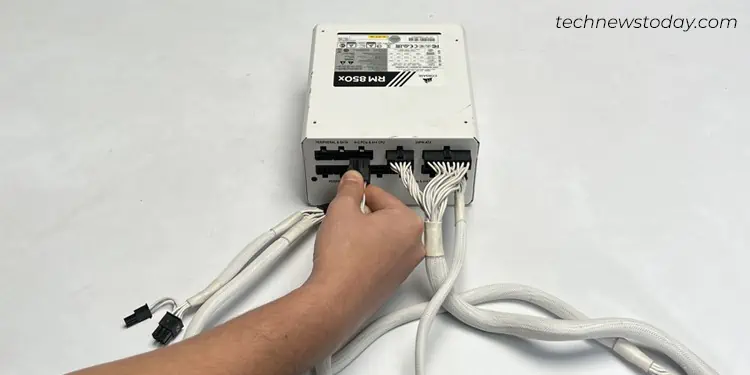
While you are replacing the cables, make sure you use only the ones from your PSU manufacturer. Otherwise, you may encounter connector compatibility issues due to the difference in pinouts.
Price Range
Now that you are here, you might have already figured out which PSU is the most expensive one.
The more customization and convenience, the higher the price tag. So, it would be a no-brainer to state that modular PSUs are expensive. Following the modular ones, semi-modular PSUs come second in the list of pricing.
On the other hand, non-modular PSUs are the cheapest among all three and better for a budget build. Although cheaper, they come at the cost of poor cable management and poor aesthetics and are somehow less reliable than the rest of the variants.
If you are low on a budget, the non-modular variant might be the best option for you. However, don’t settle for one that is too cheap. They often use low-quality components that do not provide protection against over voltage, under voltage, or short circuit, ultimately posing a risk to other crucial components of your PC.
Verdict – Modular Vs Semi Modular Vs Non Modular PSU
The choice between modular, semi-modular, or non-modular PSU totally depends upon your budget and preferences.
Modular ones are for enthusiast PC builders who want to build a PC with full customization. Semi-modular for mainstream users who are on a budget, but seek better cable management and personalization. And the non-modular ones for those who are comparatively on a low budget.
Revising the differences we discussed earlier, semi-modular PSUs might be the best value for money. It will help you achieve a balance between the price of a non-modular PSU and the customizations offered by a modular PSU.

